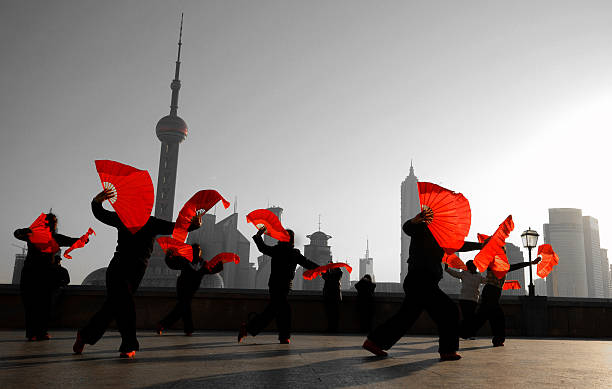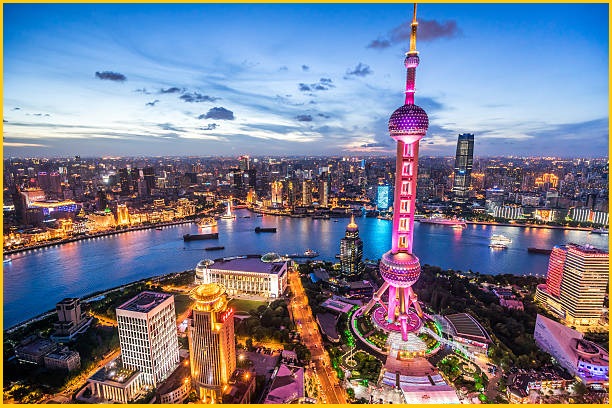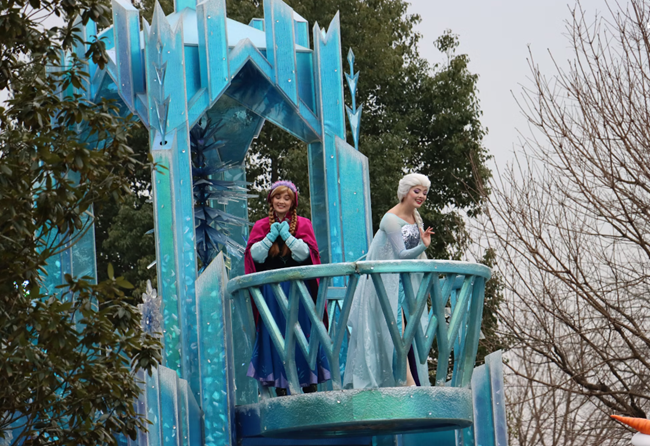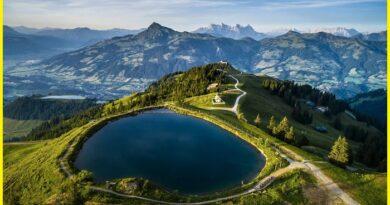Exploring Shanghai: A Guide to Must-See Tourist Attractions
Shanghai
Shanghai is one of China’s largest and most dynamic cities, renowned for its modern skyline, historic landmarks, and vibrant culture. Situated on the eastern coast of China, Shanghai serves as a global financial hub and a major center for trade, commerce, and technology. Shanghai’s history dates back thousands of years, but it began to flourish as a trading port during the 19th century. Following the First Opium War, Shanghai became one of China’s major treaty ports, attracting foreign powers and witnessing rapid economic growth.
Shanghai is famous for its futuristic skyline dominated by towering skyscrapers, including the Shanghai Tower, Shanghai World Financial Center, and Jin Mao Tower. The iconic Oriental Pearl Tower is also a prominent feature along the Huangpu River. Shanghai is home to a wealth of museums, galleries, and cultural institutions. The Shanghai Museum, Shanghai Art Museum, and China Art Museum highlight Chinese art, history, and culture.
Shanghai Tourist Attractions Map
The map shows some of the main tourist attractions in Shanghai City, including the Huangpu River, the Bund, Nanjing Road, Oriental Pearl TV Tower, Jinmao Tower, and Yuyuan Garden.

Shanghai Tourist Attractions
Shanghai is a vibrant city with a rich cultural heritage and a plethora of tourist attractions. Here the some of the best Shanghai tourist attractions.
1. The Bund
The Bund is one of Shanghai’s most iconic and historically significant areas. It refers to a waterfront promenade along the western bank of the Huangpu River in central Shanghai. The Bund has a rich history dating back to the 19th century when it was a major financial and trading hub for foreign concessions. It played a crucial role in Shanghai’s development as an international port city.
The Bund is renowned for its impressive array of architecture, featuring a mix of neoclassical, Gothic, Beaux-Arts, and Art Deco buildings. These historic structures once housed the offices of major banks, trading houses, and consulates from around the world. One of the main attractions of the Bund is its panoramic views of the Shanghai skyline across the Huangpu River. Visitors can enjoy breathtaking vistas of modern skyscrapers in the Pudong district, including landmarks like the Oriental Pearl Tower and the Shanghai Tower.
The Bund features a wide pedestrian promenade lined with historical buildings on one side and the river on the other. It’s a popular spot for strolls, jogging, and enjoying the river breeze. The promenade is especially beautiful during the day and comes alive with lights at night. Along the Bund, you’ll find several notable landmarks, including the Peace Hotel (formerly known as the Cathay Hotel), the Customs House with its distinctive clock tower, and the Bund Sightseeing Tunnel, a unique underwater tunnel connecting the Bund with Pudong.
2. Yu Garden
Yu Garden, also known as Yuyuan Garden, is a classical Chinese garden located in the heart of Shanghai’s old city area and is the best Shanghai tourist attractions. Yu Garden dates back to the Ming Dynasty, having been constructed in the 16th century by a government officer named Pan Yunduan as a private retreat for his father. It served as both a residence and a place for Pan’s father to enjoy leisure activities.
Also read- 8 Most Beautiful Natural Places in China
The garden is designed in the traditional Suzhou style, characterized by its meticulous landscaping, winding pathways, tranquil ponds, and pavilions. It covers an area of about 2 hectares (5 acres) and is divided into six main areas, each with its own unique features and themes. Within Yu Garden, visitors can admire a variety of architectural elements, including ornate pavilions, intricate bridges, carved stone sculptures, and zigzagging corridors. These structures are adorned with traditional Chinese motifs and symbols.
One of the most famous features of Yu Garden is the Exquisite Jade Rock, a prized boulder said to have been brought from Lake Taihu in Jiangsu Province. The rock is known for its unusual shape and perforations, which allow water to flow through it. Surrounding the garden are several traditional tea houses, restaurants, and souvenir shops housed in Ming and Qing Dynasty-era buildings. Visitors can enjoy tea ceremonies, sample local snacks, and purchase handicrafts and souvenirs.
3. Shanghai Disneyland
4. Shanghai Tower
5. Shanghai Museum
The Shanghai Museum is one of China’s premier cultural institutions, renowned for its vast collection of Chinese art and artifacts spanning thousands of years of history. The Shanghai Museum is located in the Huangpu District of Shanghai, near the People’s Square and the Nanjing Road pedestrian street. Its distinctive circular design and grand architecture make it a prominent landmark in the city.
The museum was founded in 1952 and has since grown into one of China’s most important museums. In 1996, it moved to its current location, a modern building designed in the shape of an ancient Chinese bronze cooking vessel called a ding. The Shanghai Museum boasts a comprehensive collection of over 120,000 artifacts, showcasing the rich cultural heritage of China. Its exhibits cover a wide range of categories, including ancient Chinese bronzes, ceramics, jade, calligraphy, painting, sculpture, furniture, and coins.
Some of the museum’s most notable treasures include bronze vessels from the Shang and Zhou dynasties, exquisite Tang Dynasty pottery figures, Ming and Qing Dynasty porcelain, ancient jade artifacts, and masterpieces of Chinese calligraphy and painting. The museum is divided into eleven galleries, each focusing on a specific category of artifacts. These galleries are meticulously curated to provide visitors with a comprehensive understanding of Chinese art and culture throughout history.
6. Nanjing Road
Nanjing Road is one of the most famous shopping streets in Shanghai, known for its vibrant atmosphere, diverse retail offerings, and historical significance. Nanjing Road is located in the Huangpu District of Shanghai, stretching from the Bund in the east to Jing’an Temple in the west, and is the best Shanghai tourist attractions. It is divided into two main sections: Nanjing Road East (Nanjing Dong Lu) and Nanjing Road West (Nanjing Xi Lu).
Nanjing Road has a long history dating back to the 19th century when it served as a major commercial street in Shanghai’s foreign concessions. It has since evolved into a bustling retail hub and a symbol of Shanghai’s economic development and modernization. Nanjing Road is lined with a wide array of shops, department stores, boutiques, specialty stores, and malls offering everything from luxury brands to affordable fashion, electronics, souvenirs, and local specialties. Some of the notable shopping destinations along Nanjing Road include the Shanghai No. 1 Department Store, the Shanghai Plaza, and the CITIC Square.
The central section of Nanjing Road, known as Nanjing Road Pedestrian Street, is closed to vehicular traffic, allowing pedestrians to stroll freely and shop without the interruption of cars or buses. This pedestrian-friendly environment enhances the shopping experience and attracts crowds of both locals and tourists. Nanjing Road is home to several landmarks and attractions, including the historic Peace Hotel, which overlooks the Bund, and the Shanghai Museum, located near People’s Square. Visitors can also find cultural venues, theaters, restaurants, and street performers along the road.
7. Jing’an Temple
Jing’an Temple, also known as Jing’an Temple, is a Buddhist temple located in the Jing’an District of Shanghai and is the best Shanghai tourist attractions. Jing’an Temple has a history dating back over 780 years, making it one of Shanghai’s oldest and most revered temples. Originally built during the Song Dynasty (960-1279), it has undergone several reconstructions and renovations over the centuries due to damage from wars and natural disasters.
The temple is situated in the heart of Shanghai, near the bustling Nanjing Road shopping street and the Jing’an Kerry Centre. Its central location makes it easily accessible to both locals and tourists visiting the city. Jing’an Temple features a blend of traditional Chinese architectural styles, with classic elements such as upturned eaves, intricate carvings, and colorful decorations. The temple’s main hall, known as the Mahavira Hall or Main Hall, houses statues of the Buddha and other important figures in Buddhism.
Jing’an Temple holds great cultural and religious significance for the people of Shanghai and beyond. It serves as a place of worship, meditation, and spiritual reflection for Buddhists, as well as a symbol of China’s rich cultural heritage. Throughout the year, Jing’an Temple hosts various religious ceremonies, rituals, and festivals, including the celebration of Buddhist holidays such as Vesak (Buddha’s Birthday) and the Lunar New Year. These events attract worshippers and tourists alike, offering opportunities to experience traditional Buddhist customs and rituals.
8. Xintiandi
Xintiandi is a trendy and upscale entertainment district in the heart of Shanghai, known for its historic Shikumen (stone gate) architecture, vibrant nightlife, and chic dining and shopping options. Xintiandi is located in the Luwan District of Shanghai, near the intersection of Huaihai Road and Madang Road. It is within walking distance of popular attractions such as the People’s Square and the Bund.
Xintiandi is considered one of the best Shanghai tourist attractions. It was originally a residential area consisting of traditional Shikumen houses, which were a common style of housing in Shanghai during the early 20th century. In the 1990s, the area underwent redevelopment to preserve its historic architecture while transforming it into a modern entertainment and lifestyle destination. One of the defining features of Xintiandi is its well-preserved Shikumen architecture. These traditional courtyard-style houses combine elements of Western and Chinese architectural styles, with stone gate entrances, narrow alleyways, and communal courtyards. Today, many of these historic buildings have been repurposed into restaurants, cafes, boutiques, and galleries.
Xintiandi comes alive at night with a vibrant nightlife scene, offering bars, lounges, and clubs where visitors can enjoy live music, DJ performances, and cocktails. The area is particularly popular among young professionals and expatriates looking for a sophisticated and cosmopolitan atmosphere. Xintiandi also features landscaped gardens, public squares, and green spaces where visitors can relax and unwind amidst the hustle and bustle of the city. These tranquil oases provide a welcome retreat from the urban environment.
9. Shanghai World Financial Center
The Shanghai World Financial Center (SWFC) is one of the most iconic skyscrapers in Shanghai and is the best Shanghai tourist attractions. The Shanghai World Financial Center is located in the Pudong district of Shanghai, in the Lujiazui financial district. It stands adjacent to other notable skyscrapers such as the Jin Mao Tower and the Oriental Pearl Tower.
Completed in 2008, the Shanghai World Financial Center was briefly the tallest building in China until the neighboring Shanghai Tower surpassed it. However, it remains one of the tallest buildings in the world, reaching a height of 492 meters (1,614 feet) with 101 floors above ground. Designed by the architectural firm Kohn Pedersen Fox Associates, the Shanghai World Financial Center features a distinctive trapezoidal aperture at the top, which gives it a unique and recognizable silhouette. The building’s sleek and modern design incorporates elements of traditional Chinese symbolism, with its shape reminiscent of a bottle opener or a money box.
One of the highlights of the Shanghai World Financial Center is its observation deck, located on the 100th floor at a height of 474 meters. Known as the “Sky Walk,” it offers breathtaking panoramic views of Shanghai and its surroundings, including the Huangpu River, the Bund, and the city’s other skyscrapers. The building’s construction involved innovative engineering techniques to ensure its structural stability and safety, particularly in Shanghai’s seismic-prone area. Its reinforced concrete core and steel frame construction withstand typhoons and earthquakes, making it a testament to human ingenuity and technological advancement.
10. Tianzifang
Tianzifang is a popular tourist destination in Shanghai, known for its charming labyrinth of narrow alleyways, traditional Shikumen (stone gate) architecture, and vibrant arts and crafts scene. Tianzifang is located in the former French Concession area of Shanghai, specifically in the Luwan District. It is nestled between Taikang Road, Sinan Road, Jianguo Road, and Ruijin Road, making it easily accessible by public transportation.
Tianzifang’s history dates back over a century, with its origins as a residential neighborhood of Shikumen houses built in the early 20th century. Over time, the area underwent urban redevelopment, and in the early 2000s, it was transformed into an arts and crafts enclave, attracting artists, designers, and entrepreneurs. One of the defining features of Tianzifang is its well-preserved Shikumen architecture. These traditional courtyard-style houses feature stone gate entrances, narrow alleyways, and brick walls adorned with ornate carvings. Many of these historic buildings have been repurposed into galleries, studios, boutiques, cafes, and bars.
Tianzifang is home to a thriving arts community, with numerous galleries, studios, and workshops showcasing the work of local and international artists. Visitors can explore various art forms, including painting, sculpture, ceramics, photography, and multimedia installations.
Shanghai offers a myriad of attractions and activities for visitors to explore. Here’s a diverse list of things to do in Shanghai.
1. Jing’an Temple
Experience the serenity of this historic Buddhist temple, with its ornate architecture and tranquil gardens, located in the bustling Jing’an District. Visiting Jing’an Temple offers more than just observing its architectural beauty; it provides a window into Chinese culture, spirituality, and history.
Wander through the temple grounds and admire its traditional Chinese architecture, including the Main Hall (Mahavira Hall), Bell Tower, Drum Tower, and other pavilions. Take in the intricate details of the colorful carvings, statues, and decorative elements. Jing’an Temple is an active Buddhist temple, so take the opportunity to learn about Buddhist teachings, rituals, and practices. You can observe worshippers paying respects to the Buddha, offering incense, and chanting sutras.
Don’t miss the chance to see the temple’s most revered relic, the Jade Buddha. This precious statue is carved from a single piece of white jade and depicts the seated Buddha in a meditative pose. It’s considered a symbol of peace, wisdom, and compassion.
2. Shanghai Acrobatic Show
Be amazed by the breathtaking feats of acrobatics, dance, and contortion at one of Shanghai’s renowned acrobatic theaters. Attending a Shanghai acrobatic show is a captivating and thrilling experience that showcases the incredible skill, agility, and precision of Chinese acrobats. The shows feature a variety of jaw-dropping acts that defy gravity and push the limits of human ability. You’ll witness astonishing feats of balance, flexibility, strength, and coordination performed by highly trained acrobats.

Experience the artistry and athleticism of traditional Chinese circus acts, such as plate spinning, diabolo juggling, hoop diving, chair stacking, and pole climbing. These acts are often accompanied by vibrant costumes, music, and choreography.
3. Cruise on the Huangpu River
Take a scenic cruise along the Huangpu River to admire Shanghai’s skyline illuminated at night, with landmarks such as the Oriental Pearl Tower and the Shanghai Tower lighting up the sky. Enjoy breathtaking panoramic views of Shanghai’s skyline from the vantage point of the Huangpu River. Marvel at the juxtaposition of historic colonial-era buildings along the Bund with the futuristic skyscrapers of Pudong’s Lujiazui financial district.
Cruise past some of Shanghai’s most famous landmarks, including the Oriental Pearl Tower, the Shanghai Tower, the Jin Mao Tower, and the Shanghai World Financial Center. These architectural marvels are illuminated at night, creating a dazzling spectacle reflected in the river’s waters.
Learn about Shanghai’s history and heritage as you pass by historic landmarks such as the Waibaidu Bridge, the Custom House, and the former British and French concession areas. Hear stories and anecdotes about Shanghai’s transformation from a humble fishing village to a global metropolis.
Explore nearby attractions such as the water towns of Zhujiajiao and Zhouzhuang, the ancient city of Suzhou with its classical gardens, and the historic town of Hangzhou, famed for West Lake and Longjing tea. With its blend of modernity and tradition, Shanghai offers a wealth of experiences for travelers seeking culture, history, shopping, entertainment, and culinary delights.
How to Reach Shanghai
Reaching Shanghai is relatively easy due to its status as a major transportation hub in China. Shanghai is served by two major airports: Shanghai Pudong International Airport and Shanghai Hongqiao International Airport. These airports offer numerous domestic and international flights connecting Shanghai to cities around the world. Upon arrival, you can take taxis, airport shuttles, or the metro to reach your final destination in the city.
Shanghai has several railway stations, with Shanghai Hongqiao Railway Station and Shanghai Railway Station being the main hubs for high-speed trains and conventional trains, respectively. High-speed trains connect Shanghai to major cities across China, including Beijing, Hangzhou, Suzhou, Nanjing, and more. You can book train tickets online, at railway stations, or through authorized ticket agents.
Shanghai is situated on the coast of the East China Sea, and there are ferry services connecting Shanghai to nearby coastal cities and islands. For example, you can take a ferry from Shanghai to destinations such as Putuo Island, Chongming Island, and Zhoushan.




